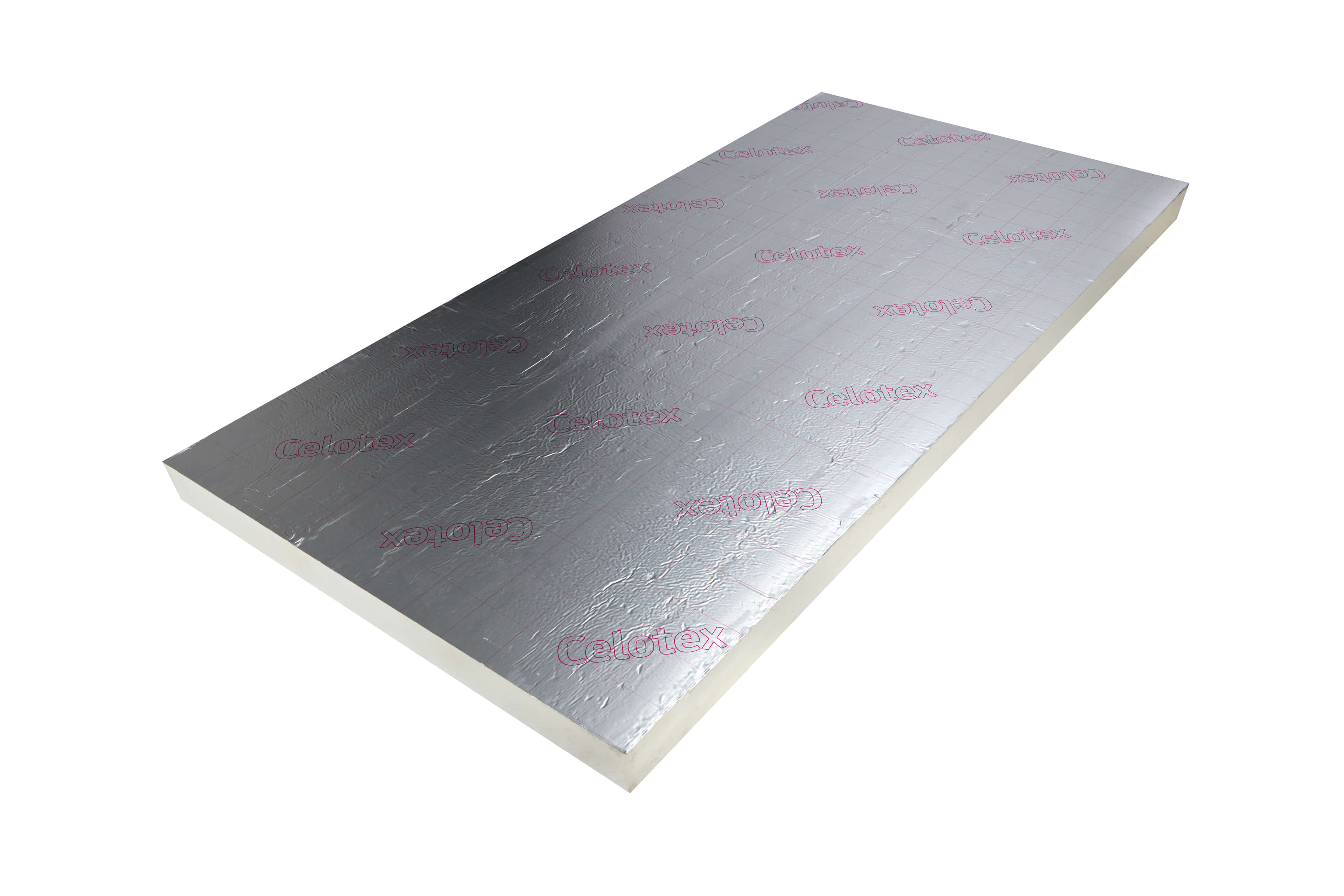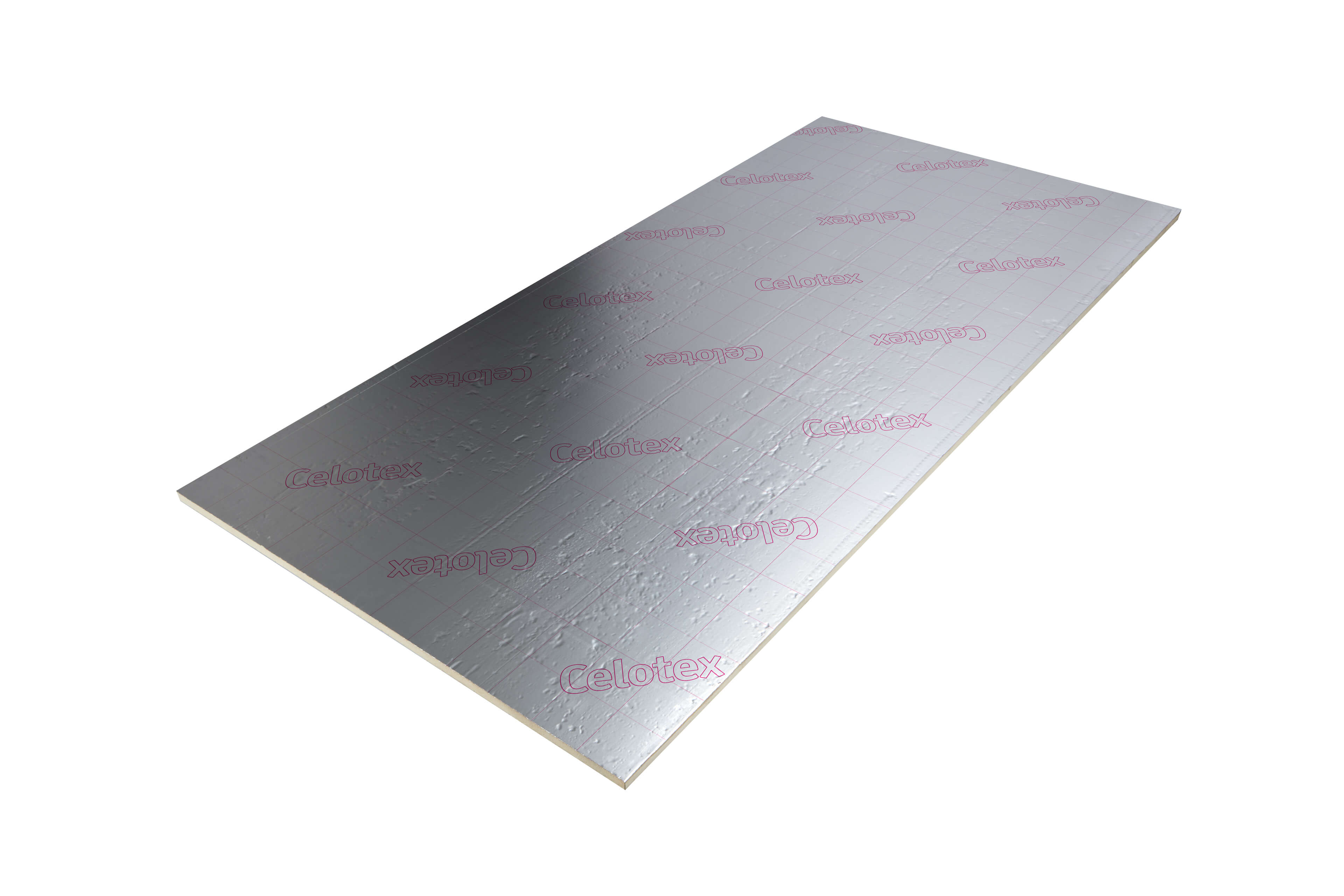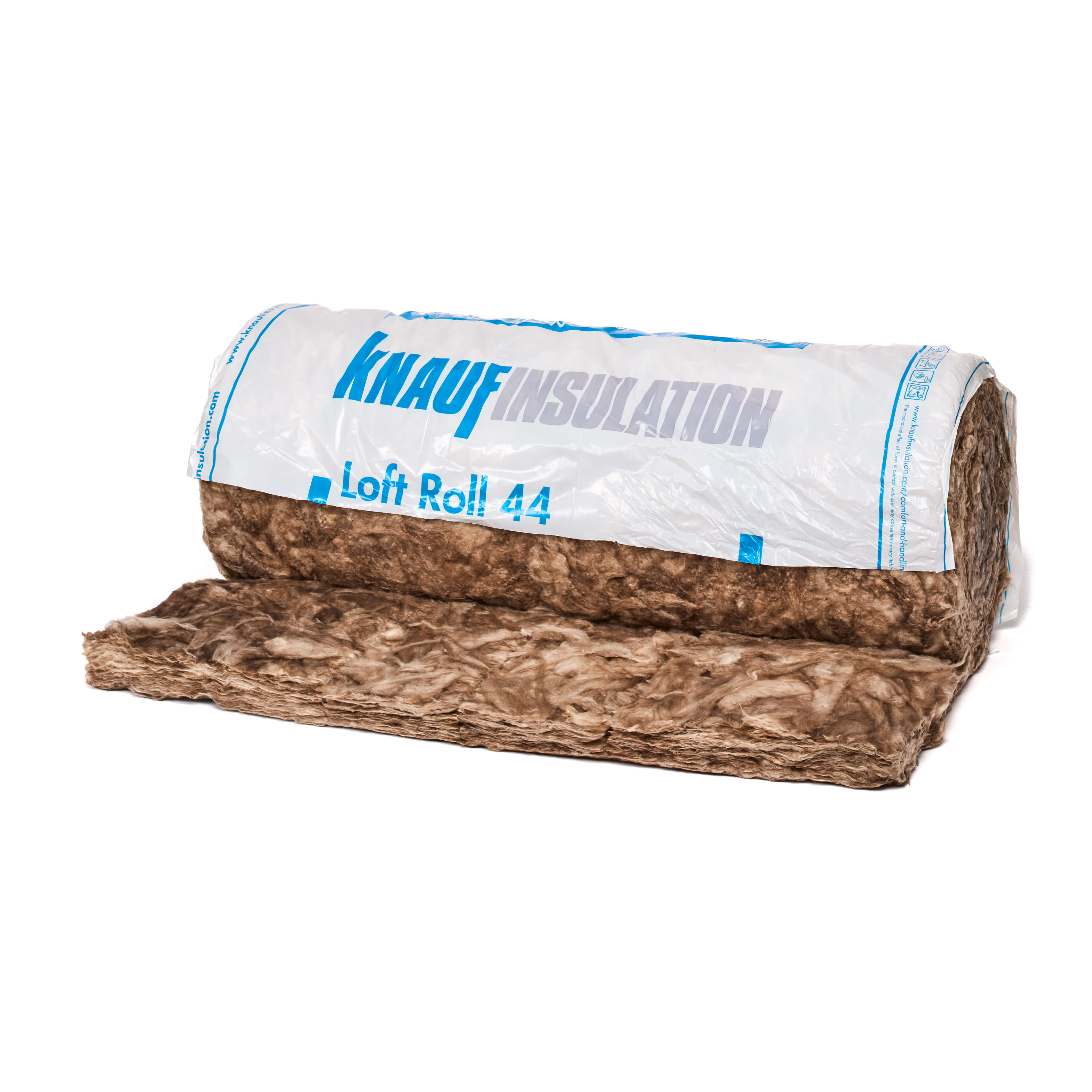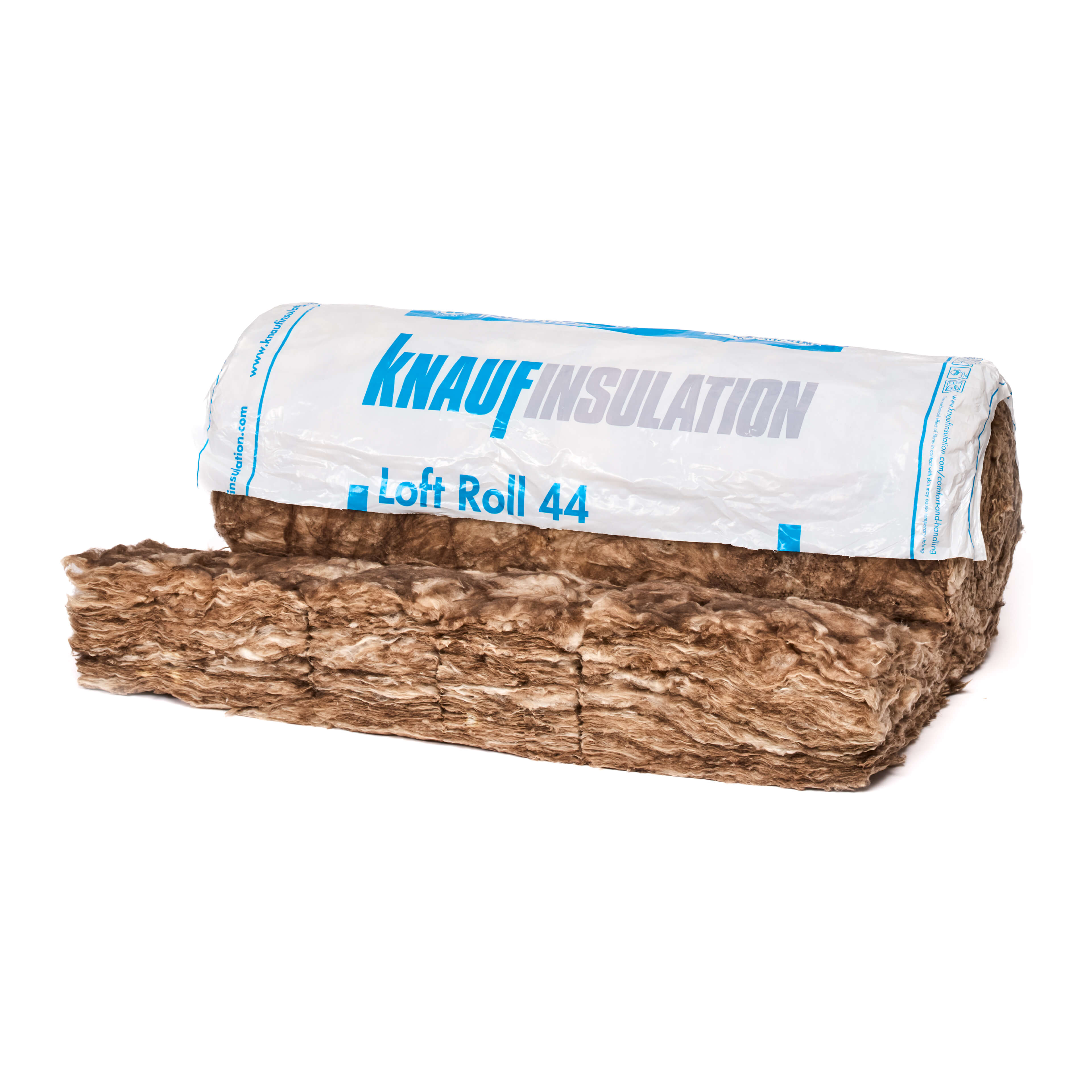Roof Insulation
(81 Products)Roof insulation is the roof's first line of defence against heat loss. A critical component of your roof's construction, it is typically installed between the outermost layer of a roof and the innermost layer of a ceiling. Not only will insulating save you money on your utilities, but it will also help decrease your carbon footprint. We stock a comprehensive range of roof insulation materials (fibreglass, mineral wool, PIR) from the industry's most reputable brands.
What Is Roof Insulation?
Roof insulation is a crucial factor in improving a property's energy efficiency; experts estimate that up to 35% of the heat in a building is lost through its roof.
Quality roof insulation ensures the heating and cooling systems within a property won’t expend as much energy to maintain a comfortable temperature, meaning lower heating bills and a reduced carbon footprint.
There are a variety of different types of roof insulation available on the market, so it's important to choose the right one for your project.
The most common method is installing roof insulation boards between the rafters and then installing plasterboard on top of the insulation boards. This process is most common when the loft space is converted into a room.
Alternatively, you can have foam insulation sprayed between the rafters by professional insulation specialists.
What Are The Four Main Materials Used in Roof Insulation?
- Fibreglass insulation
- Insulation boards/insulation panels
- Glass mineral wool insulation
- Spray foam insulation (PUR)
Pitched Roof Insulation
When insulating a pitched roof you have a couple of options; you can either install standard loft insulation that sits on top of the joists (a method which can limit overall roof space) or warm-roof insulation, which insulates the entire loft area.
Pitched roofs are generally insulated by laying insulation boards, polystyrene insulation panels (backed with foil) or rolls at rafter level.
When tackling warm pitched roof construction, we recommend investing in a rigid insulation board such as 100mm Celotex GA4100 PIR Insulation Board, which is suitable for application between and over the rafters.
If you're looking for a more cost-effective solution, Loft Roll can be used between the rafters, with the option of installing PIR Insulation or Insulated Plasterboard over the rafters for thermal enhancement.
Please note pitched roof insulation costs will vary depending on the material and method you use.
Warm Deck Insulation
The most common type of flat roof build-up in the UK is a warm roof deck, where the insulation sits below a waterproof membrane and above the structural deck.
Because the insulation is above the structure, warm flat roofs do not require ventilation. A warm flat roof is typically the most simple option for ensuring that the construction meets Building Regulations.
Cold Deck Insulation
Cold roof insulation sees thermal insulation placed beneath the structural deck, allowing it to remain cold. This design requires a vapour control layer to function effectively, in conjunction with adequate ventilation to allow water vapour to escape before it condenses on the cold deck.
Flat Roof Insulation
Unlike pitched roofs, flat roofs don't have loft space, so the insulation must be installed between the ceiling and roof membrane. Flat roofs are often insulated with rigid insulation boards that are then covered with a weatherproof layer.
The insulation boards work to prevent heat transfer, thereby inhibiting heat from escaping in winter and entering in summer. If you're looking to install flat roof insulation, it's best to do so from the outside. Flat Roof Insulation can also be installed from the inside, but condensation issues may arise if it is not installed correctly.
Preferably, a flat roof should be insulated from above. Install a layer of rigid insulation board either directly on top of the roof's weatherproof layer or above the timber roof surface, with an additional weatherproof layer placed on top of the insulation board.
Flat roof insulation costs will depend on which insulation method you choose and the amount of roofing insulation required.
Inverted Roof Insulation
Inverted roof systems (otherwise known as 'upside down' roofs) place thermal insulation above the waterproof layer instead of below it. Keeping the waterproof membrane at an even temperature and away from damaging UV radiation or weather conditions are key advantages of this method.
The amount of insulation used will determine how well the inverted roof performs thermally.
What Are The Benefits Of Roof Insulation?
- Heat retention/prevention - Roof insulation controls heat transfer to help a building stay warm in the winter and cool in the summer. This, in turn, reduces energy bills and optimises the overall energy efficiency of a building.
- Sustainability - A byproduct of energy efficiency is sustainability. The less energy a building uses, the less pollution you emit into the environment.
- Longevity/durability - Multiple structural issues can present themselves in an uninsulated roof such as rot, damp and condensation. Installing roof insulation is a preventative measure to ensure the durability of your build.
Frequently Asked Roof Insulation Questions
Frequently Asked Questions About Roof Insulation
What Is The Difference Between Warm Deck & Cold Deck Roof?
The terms "warm deck roof" and "cold deck roof" simply refer to the position of the insulation in an overall build-up.
A warm deck roof, for example, places insulation above rafter level, indicating that the rafter space beneath is "warm".
Whereas, insulation in a cold deck roof, is installed beneath the rafters. The term "cold deck" doesn't mean that the roof itself is cold, but rather that anything above the insulation is subject to colder temperatures. This happens because there's no barrier over the top of the rafters to prevent air from seeping in and circulating through them.
Let's break down each method below.
Cold Deck:
Installing insulation in a cold deck roof at ceiling level creates a colder temperature void, especially during winter, which can contribute to the formation of condensation. This can lead to rotting timber, damp ceilings, and damaged structural integrity.
As a result, it's critical to make sure the void is well-ventilated. Flat roof construction was originally done this way, but as insulation has improved over time, the warm deck roof method has become more popular.
Warm Deck:
In a warm deck roof, the insulation is installed below membrane on top of the roof deck--usually with a vapour control layer placed underneath the insulation. With this type of construction, there's much less risk of condensation because the void remains at a similar temperature to the roof.
What Is The Cheapest Way To Insulate A Roof?
Roof insulation prices will always vary. Roof insulation cost will depend on the size of the space you are insulating, the type of insulation materials you end up buying, and your overall budget.
If you are insulating a flat roof, cold or warm deck insulation will set you back at approximately £35 per square meter, with other types of roof insulation coming in at a similar price. Exterior insulation, on the other hand, is a touch more costly at around £80 per square meter.
In terms of insulating roof materials, fibreglass (glass wool insulation) is the cheapest type of roof insulation you can buy.
What Is The Recommended Depth For Loft Insulation?
Current building regulations recommend a minimum insulation depth of 270mm (blanket insulation such as mineral or glass wool) in the loft.
Multiple layers can be added to the build-up to achieve this. Please consult a professional to determine how much insulation you will need when embarking on a DIY project.
How Much Does a Loft Conversion Cost?
The cost of a loft conversion in the UK can vary widely depending on several factors. Here's a general overview of potential costs:
Basic Loft Conversion: A simple loft conversion with insulation, flooring, skylights, and basic electrical work can start from around £20,000 and go up to £40,000 or more.
Dormer Loft Conversion: Adding a dormer extension for extra space and headroom increases costs. Prices typically range from £30,000 to £60,000.
Hip-to-Gable Loft Conversion: Converting a hipped roof to a gable end creates more usable space. Costs may start around £40,000 and go upwards.
Mansard Loft Conversion: A Mansard conversion, which involves altering the roof structure, is generally the most expensive option. Prices can range from £50,000 to £100,000 or more.
Luxury Loft Conversion: For high-end finishes, en-suite bathrooms, custom designs (custom roof tiles and roof windows) and premium materials, costs can exceed £100,000.
Additional costs to consider include architectural fees, planning permissions, building regulations, and any unforeseen issues that might arise during construction.
To get an accurate cost estimate for your specific loft conversion project in the UK, it's recommended to consult with local contractors, architects, or professionals who can provide detailed quotes based on your requirements and the unique characteristics of your property. They will also be able to ensure that your loft is insulated properly.






















